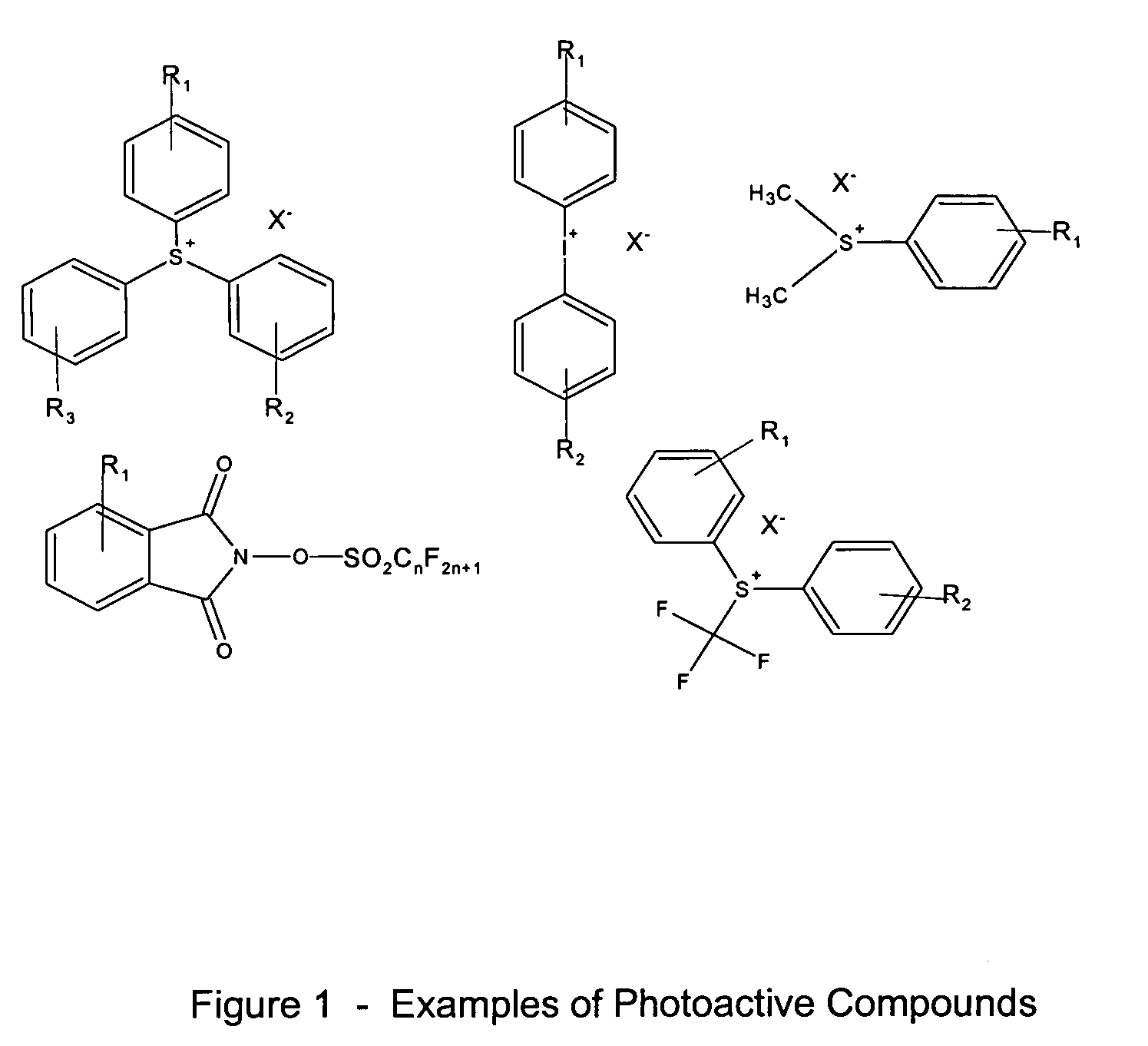Positive-working photoimageable bottom antireflective coating
a technology of anti-reflective coating and photoresist, which is applied in the direction of photosensitive materials, instruments, photomechanical equipment, etc., can solve the problems of damage to the substrate, and damage to the photoresist pattern
- Summary
- Abstract
- Description
- Claims
- Application Information
AI Technical Summary
Problems solved by technology
Method used
Image
Examples
synthesis example 1
[0048] To a 250 ml 4 neck flask, equipped with a condenser, a thermometer, a nitrogen gas inlet and a mechanical stirrer, were added methacrylate ester of 9-anthracene methanol (AMMA) (4.2 g), 4-acetoxystyrene (13.8 g), azobisisobutylonitrile (AIBN) (0.8 g) and propyleneglycol monomethylether (PGME) (50 g). A solution was obtained and degassed for 15 minutes. Then the reaction mixture was heated to 70° C. and stirred at that temperature for 5 hours under flowing nitrogen. After the completion of the polymerization, the obtained solution was cooled down to the room temperature and tetramethylammonium hydroxide (26 wt % in water) solution (7 g) was added. The reaction temperature was raised to 40° C. and was kept for 3 hours before being raised to 60° C. After heating at 60° C. for 8 hours, the reaction mixture was cooled down to room temperature and was acidified to pH 6 using acetic acid. The resultant polymer was precipitated into 600 ml of methanol and the obtained solid was filte...
synthesis examples 2-5
[0049] Polymers with structures (II) to (V) were synthesized in the similar procedure as Synthesis Example 1 except using the different types and amount of monomers in accordance with the monomer ratio given in the structures.
example 1
[0050] A copolymer represented by structure (I) from Synthesis Example 1 (2.5 g), tris(4-vinyloxy butyl) trimellitate (0.25 g, Vectomer®5015, available from Aldrich Co.), and triphenylsulfonium nonaflate (0.05 g) were dissolved in 68 g propyleneglycol monomethylether acetate (PGMEA) and 29 g of propyleneglycol monomethylether (PGME) to form an antireflective coating composition. The solution was filtered through a 0.1 μm filter.
PUM
| Property | Measurement | Unit |
|---|---|---|
| pKa | aaaaa | aaaaa |
| temperatures | aaaaa | aaaaa |
| wavelength | aaaaa | aaaaa |
Abstract
Description
Claims
Application Information
 Login to View More
Login to View More - R&D
- Intellectual Property
- Life Sciences
- Materials
- Tech Scout
- Unparalleled Data Quality
- Higher Quality Content
- 60% Fewer Hallucinations
Browse by: Latest US Patents, China's latest patents, Technical Efficacy Thesaurus, Application Domain, Technology Topic, Popular Technical Reports.
© 2025 PatSnap. All rights reserved.Legal|Privacy policy|Modern Slavery Act Transparency Statement|Sitemap|About US| Contact US: help@patsnap.com



